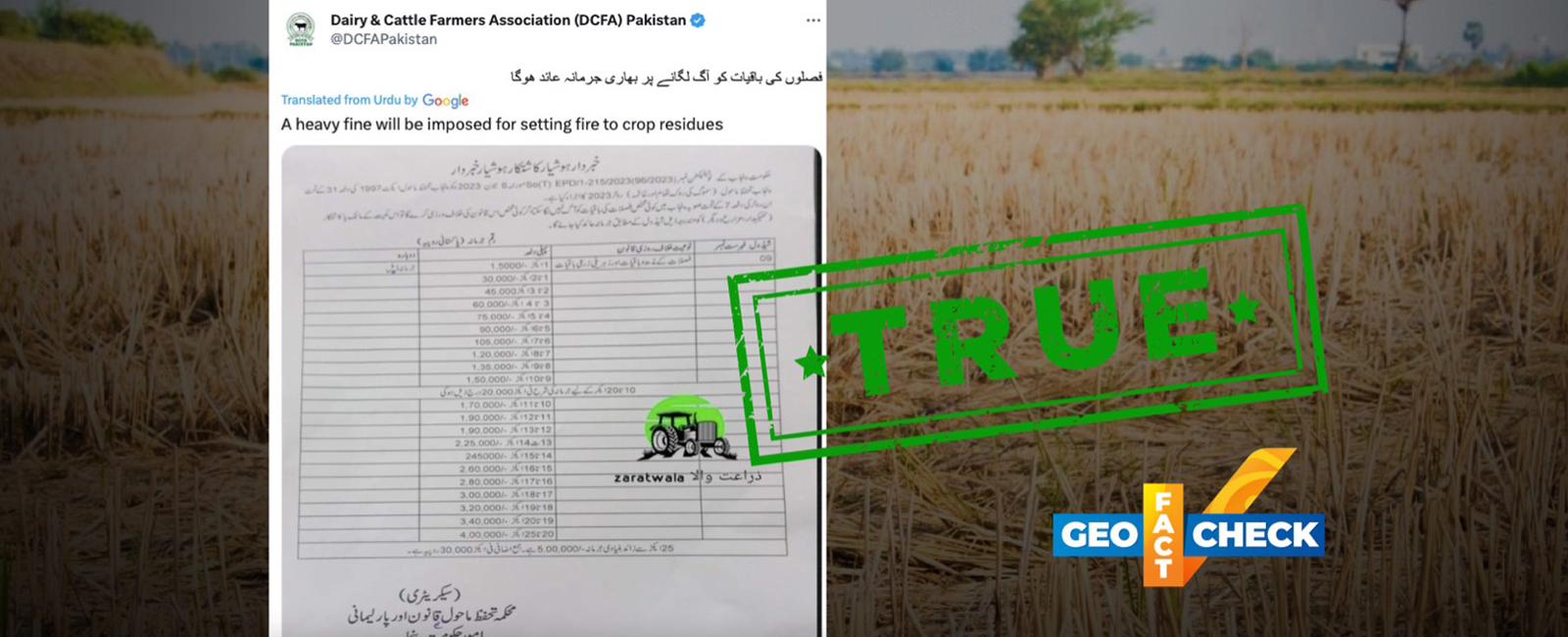Fact-check: True. Farmers will now be fined Rs500,000 for stubble burning in Punjab
In order to reduce smog, Punjab has indeed increased the fine on stubble fires from Rs50,000 to Rs500,000

Multiple Twitter users claim that the Punjab government has imposed heavy penalties of up to Rs500,000 in the province for stubble burning on agricultural lands.
The claim is accurate.
Claim
On July 7, a verified Twitter account shared an alleged notification by the Environment Protection Department in Punjab, which states that in order to reduce smog in the province, farmers will now be fined up to Rs500,000 if caught burning crop residue.
The document then provides a breakdown of the penalties. The fines begin from Rs15,000 on one acre of land and go up to Rs500,000 on 25 acres of land.
The tweet has been viewed 650 times, at the time of writing.
Similar claims were shared here and here.
Fact
Punjab has indeed increased the fine on stubble fires from the earlier rate of Rs50,000 to Rs500,000, confirms the Environment Protection Department (EPD) Punjab, which is responsible for the protection, conservation and improvement of the environment in the province.
Naseem-ur-Rehman, the spokesperson of the EPD, told Geo Fact Check over the phone that while the notification circulating online was not issued by their department but the information mentioned in the document was accurate.
Earlier, a flat fine of Rs50,000 was imposed across the board on stubble burning regardless of the stretch of the land.
Now, a penalty of Rs15,000 will be collected per acre on one to 10 acres of land, Rs20,000 per acre on 10 to 20 acres of land, Rs400,000 on 20 to 25 acres of land and a whopping penalty of Rs500,000 on land measuring 25 acres.
On land measuring over 25 acres, a base penalty of Rs500,000 will be fined and an additional Rs30,000 per acre on anything over 25 acres.
Repeat violators will have to pay double the above-mentioned fines.
Rehman added that the fines have been bumped up considerably to combat the toxic smog that blankets the province in the winters.
He also told Geo Fact Check that the United Nations’ Food and Agriculture Organisation conducted a survey in 2018, according to which a major source of pollution in the province was the transport sector (43%), followed by the industrial sector (25%) and then by the agricultural sector (20%).
With additional reporting by Fayyaz Hussain
Follow us on @GeoFactCheck. If our readers detect any errors, we encourage them to contact us at [email protected].




